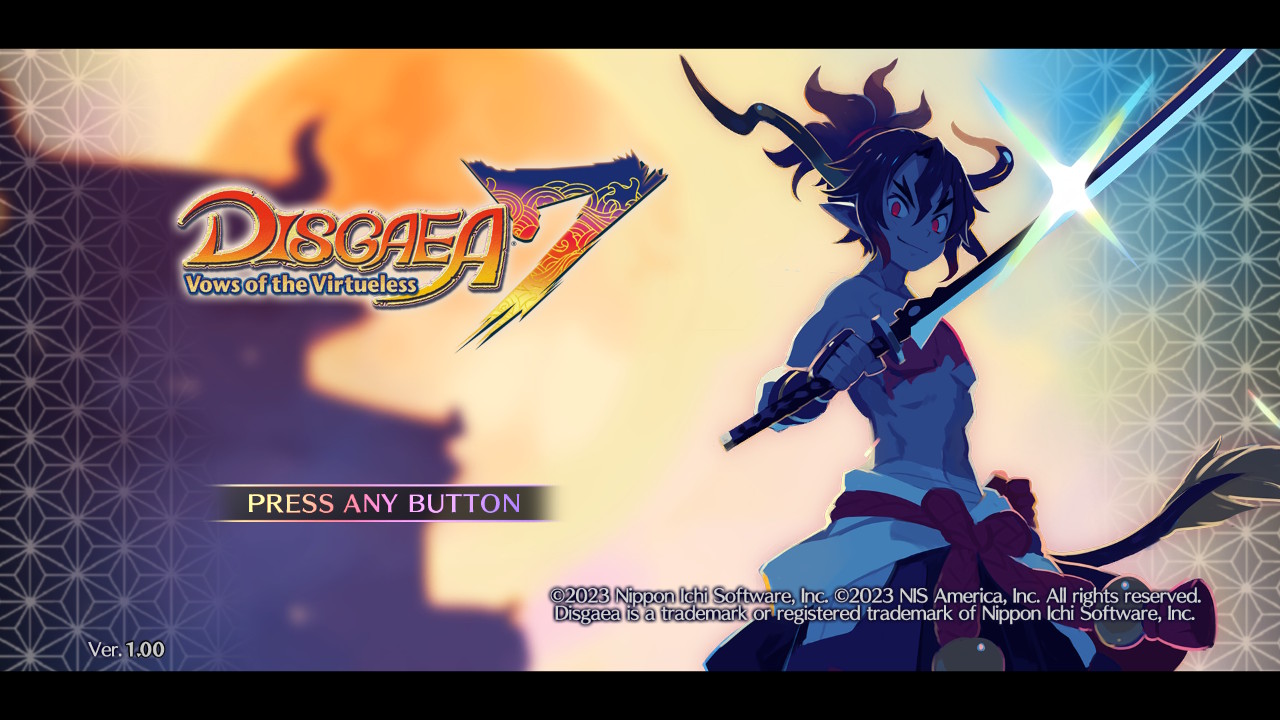[Review] Disgaea 7: Vows of the Virtueless – Nintendo Switch
Developed By: Nippon Ichi Software Published By: NIS America Categories: SRPG Release Date: 10.03.23 Price: $60
The Disgaea franchise is incredibly ambitious and with each new installment the fun and chaos grow. Disgaea 7: Vows of the Virtueless is no exception as Nippon Ichi Software wanted to right the wrongs of its predecessor and make the newest title their biggest and boldest one yet. Many fans were disappointed with how Disgaea 6 turned out, mainly with the performance issues from making the jump to 3D. Vows of the Virtueless takes all the best parts of the franchise and molds them into a complete package that would please any Disgaea fan. In my case there was very little to complain about and a lot to love.
The game begins with Pirilika, a rich spoiled girl, venturing into the Hinomoto Netherworld on a quest to experience their culture. But upon arriving there, she discovers that much of their culture and history has been wiped away by the new regime. She meets Fuji, who at first glance is the very definition of demonic and he agrees to help her for an exorbitant amount of money.
During the first few episodes we learn a lot about each of the characters and how they fit in the world. Pirilika wants to restore the Bushido culture and to do so, she needs to collect a series of very powerful founding weapons. I really enjoyed the story for two main reasons. The first is that each chunk of plot is separated nicely in coherent sections that are short and sweet.
In nearly all RPG’s that I’ve played, progression is done in one of two ways. The first way is with long chapters that are full of dialogue, combat, and exploration. The second way is with the use of long stretches of dialogue in between gameplay. Both ways are fine, but the way Disgaea does it is exceptional. One episode has five chapters, and each chapter has one battle with a short dialogue scene that moves the story forward.
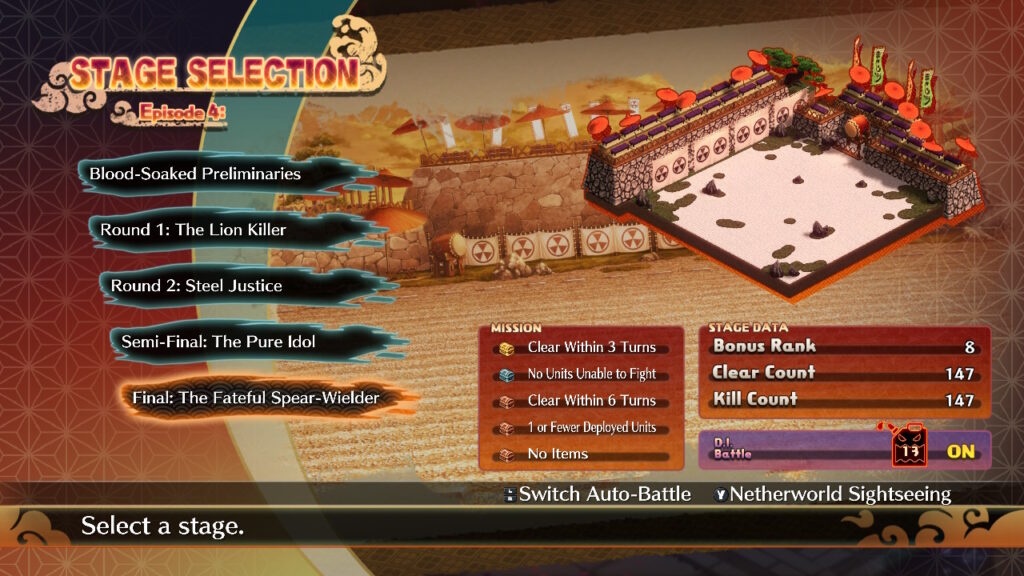
Instead of long cutscenes with a ton of text, each section of story is short and sweet, and that’s what I loved about the game. You can turn on the game and only play for 10 or 15 minutes and then turn it off again without having to worry about needing to drag on until there’s a safe spot to stop playing. This also allows you to stay engaged with the story because battles are more frequent and only important information is present in these scenes.
The second aspect of the story that I loved was how the characters interacted with the story itself. The story is interesting and easy to understand but the incredible cast of characters and their insane backstories and personalities made the story fun and engaging. The characters may all be evil but they’re lovable as well. Each of them was crafted in such a way that made them both entertaining and interesting.
On the surface Fuji sounds like a jerk who only cares about money and himself. But he also serves as the voice of reason and common sense for the rest of the group, and you learn more about him in every episode that makes you want to invest in him. Then you have Pirilika and Yeyasu, who are both really loud. Pirilika is loud in a sort of geeking out and oblivious way while Yeyasu is more of an annoying and obnoxious character.
Both personalities clash with Fuji but their interactions always end up being hilarious of sweet to an extent. Then you have characters like Ceefore and Higan Zesshosai who are both badass. The characters are obviously demons and many of them have lived through an immeasurable amount of violence, but they’re surprisingly relatable and down to earth. The writing does a great job at making us want to invest our time into their backstories and redeeming qualities.
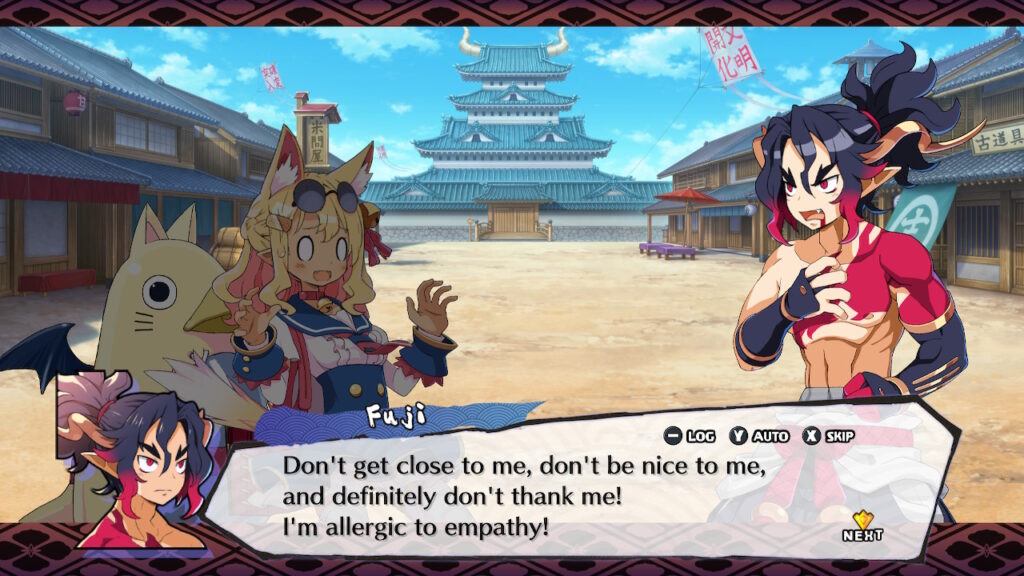
Not only that, but the vocal work was some of the best that I’ve ever heard in a Switch game and really made every character come to life. The people at NIS America did such a great job with translating and directing and the vocal cast did an amazing job with their performance. I especially loved what the actors did for Fuji, Pirilika, and Yeyasu as they were able to cleanly exaggerate their personalities.
The only other aspect to discuss would be the gameplay which has its fair share of returning and new features. The overall gameplay loop is your standard turn-based grid RPG similar to something like Fire Emblem. But unlike your average SRPG, you can make your all your units ridiculously overpowered in Disgaea. You are able to grind and work on every unit as much as you like until each reaches the 9,999 level cap or until you’re doing impossible amounts of damage.
That kind of damage wouldn’t be possible without some of the cool features that the game has such as the juice bar or the new jumbification system. The juice bar was easily my favorite aspect of the gameplay loop because it allows you to tailor your leveling experience any way that you like. Every time you complete a battle, the characters that battled gain experience and you gain a certain amount of netherworld currency, known as HL.
But you also gain a certain amount of EXP and Mana that independently gets stored in the Juice Bar. You can then put these experience points and mana towards any character you like or strengthen them in other ways by using boosts that you collect from the evil gacha at the hospital. The battles themselves are lots of fun and you can change how difficult each battle will be at the Cheat Shop or change every aspect of each character using the Dark Assembly, Item Worlds, or the Skill Shop.
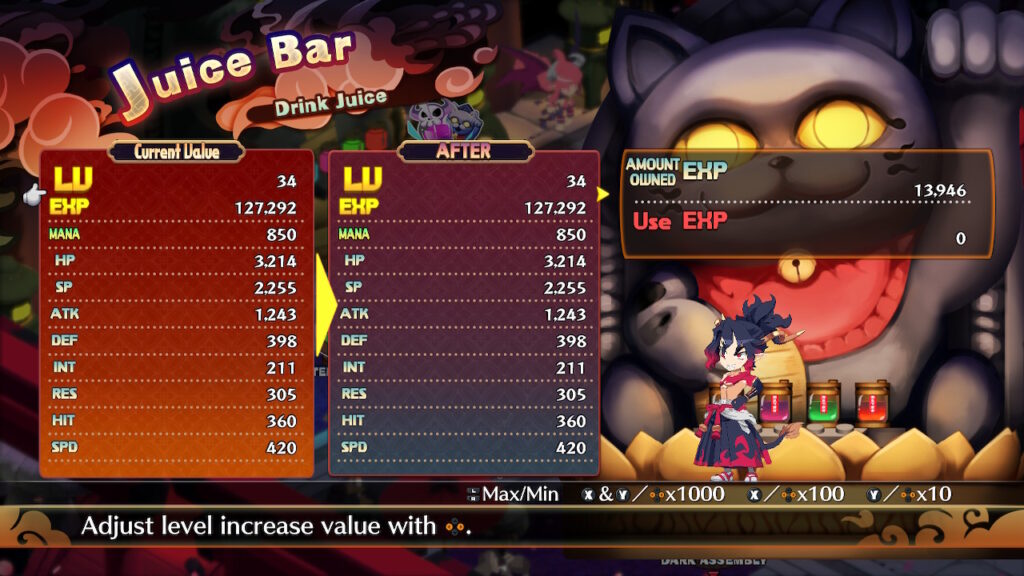
It’s because of all this that a hardcore player should easily be able to spend 100 hours or more in the game. Don’t get me wrong, you don’t actually have to use all these crazy features or spend an hour grinding every episode to make your units stronger. If you play the game at a normal pace you will be fine, but you have the option to make the experience incredibly challenging or to make your characters super strong. But it’s never necessary.
In addition, you also have the option to go well beyond the scope of a normal Disgaea experience. For example, you now have the option to do ranked battles against other players. You won’t actually be playing against the players as everything is automated, but you get to create and upload your own party that will fight against others for a spot on the leaderboard and a chance to call yourself one of the best demons in the Netherworld.
I think this is an amazing feature because it gives you more of a reason to grind and make your units overpowered. During most of my journey through the campaign I focused on the selection of characters that I liked the most like Fuji and Yeyasu. But in order to get a high ranking in the online mode, I had to recruit a lot of extra characters and focus on making them stronger.
Even though I had my main team done, I spent hours working on making my online party as strong as it could be so that I could stay near the top of the leaderboard for a while. The main campaign mode has as much content as you could ask for but if you invest in the ranked battle aspect, you can spend dozens of hours making the best party possible, even after you’ve beaten the main game.
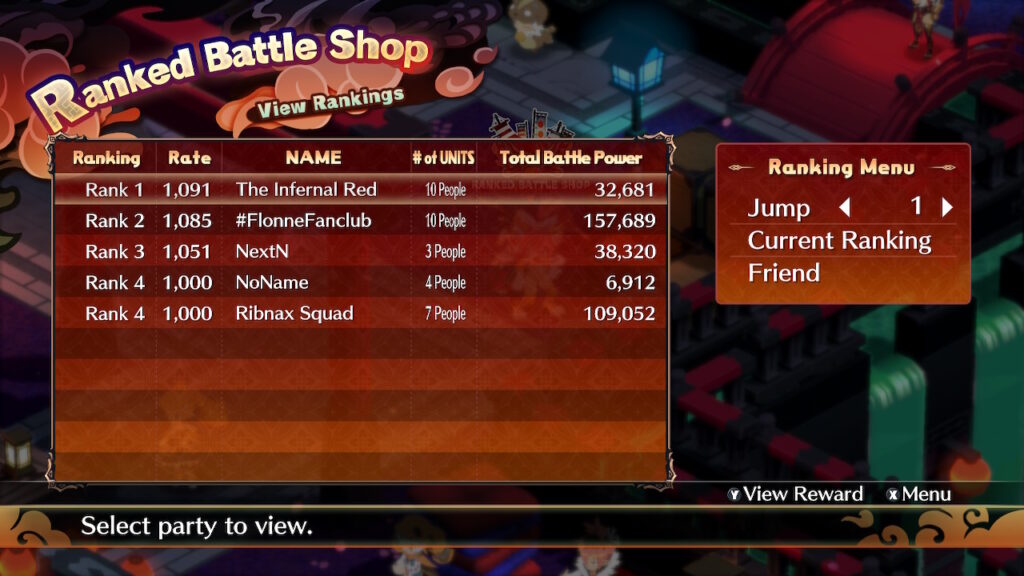
I think it’s rare for a game to have such a big online aspect in addition to a single player campaign that’s just as big. Most games that have a big online presence are games where the online aspect take up the majority of the game such as Fortnite or Call of Duty. Even though it’s just auto battles, people who want to be the best online will take this aspect seriously and put a lot of effort into it. That’s exactly what I did with my party The Infernal Red and I was having a blast.
All these things that I talked about make it seem like you could easily invest 100 hours or more, but the truth is that I have barely scratched the surface. For instance, the Dark Assembly is a massive feature that could deserve its own entire review. Mana can be used for skills and evilites but you can stockpile mana to use at the Assembly to change so much about your gameplay experience such as making new squads, giving yourself temporary and permanent buffs, or reincarnating the unit.
Reincarnating is an overpowered mechanic because it will reset the units to level 1 but you get an insane boost. When you reincarnate you get to add permanent boosts to select stats but all the stats will get a boost. For example, when I first reincarnated Fuji, he was level 22 and I put the boosts all onto his attack stat but when he made it back to level 22, every stat was significantly higher. You could reincarnate a unit that’s at max level and when you get back to max level, they’ll be even stronger.
Then you also have things like the Item Worlder, Squad Shop, Quests, and eventual DLC which add so much to your overall experience. The average completionist playthrough of a Disgaea game can take you anywhere between 100 and 300 hours but someone who loves the franchise and takes advantage of everything there is to do will blow past those playtimes easily.
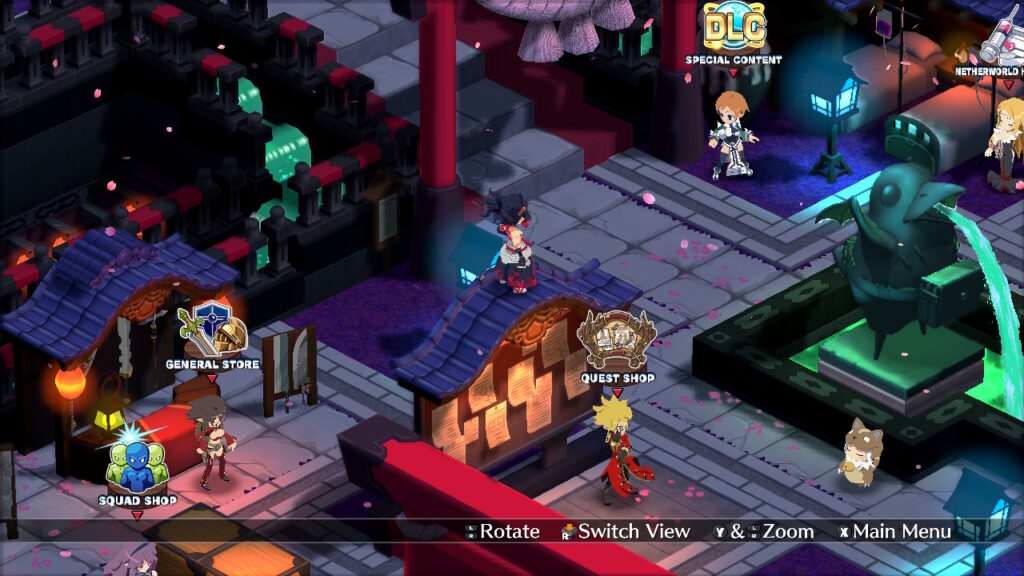
Any fan of the SRPG genre should easily be able to fall in love with Disgaea 7: Vows of the Virtueless. It’s a very fun game with a ton of content, amazing characters, and a very entertaining story. I love these kinds of games and because of that, it easily became my Game of the Year, and one that I think everyone should be playing.
If you want to play the game for yourself, there are three ways to get your hands on it. The easiest way would be to get a digital copy straight from the eshop for $60 though I personally think this is the worst option. The physical deluxe edition costs the same $60 and comes with a soundtrack and artbook. You can also get the $100 Limited Edition straight from the NIS America store that comes with a bunch of extra goodies.
5/5





*Game Download Code graciously provided for the purpose of review

